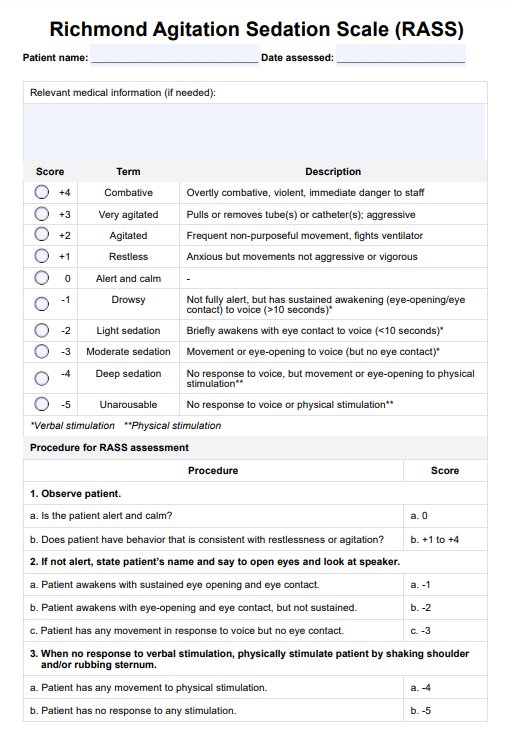Unlike other scales, which focus on just one thing, this scale assesses both sedation and agitation, giving healthcare professionals a more comprehensive range to consider as they examine and treat patients.

Richmond Agitation Sedation Scale (RASS)
Assess the level of sedation or agitation of your hospitalized patients by using the Richmond Agitation Sedation Scale (RASS).
Use Template
Richmond Agitation Sedation Scale (RASS) Template
Commonly asked questions
The RASS Scale has clear instructions and is easy to accomplish. It shouldn't take you more than ten seconds to assign a score, especially if you have gotten all the information you need based on your observations.
Besides emergency rooms and intensive care units, you can use this scale in any setting where a patient's agitation and sedation may be of concern, like operating rooms!
EHR and practice management software
Get started for free
*No credit card required
Free
$0/usd
Unlimited clients
Telehealth
1GB of storage
Client portal text
Automated billing and online payments











